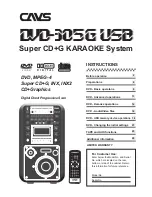
160/200/160P/200P AC/DC Series Machine
www.longevity-inc.com
21
accessories section of our website.
The old adage says to measure twice and cut once,
but we want to go ahead and suggest you make a
sample cut (of the same caliber as the intended use)
with your Longevity Plasma Cutter before you get
started. Use this rehearsal just to be sure you have
correctly calibrated all the settings to work as
desired. If you are going to be cutting for a large
piece of metal, it can sometimes be difficult for even
the most experienced metal worker to cleanly stop
and start. We recommend you use the sample cut to
thoroughly rehearse the intended cut with your
Longevity Plasma Cutter.
Longevity Plasma Cutter Tips
In order to successfully execute a clean cut with your Longevity
Plasma Cutter you must consider a combination of elements involved
in the cutting process:
The tip of your torch is designed to focus the plasma stream to the
work piece in accordance with the appropriate setting (see owner's
manual). Trying to use a 80-amp torch tip at a 40-amp setting will
not focus the energy of your torch accurately and thus lead to a
wider kerf. And the opposite scenario of using an 80-amp setting
with a 40-amp tip will abuse your torch tip and require it to be
replaced sooner than intended.
When cutting a thicker material with your Longevity Plasma Cutter
it is important to use a torch tip designed for a higher-amp output.
Higher-amp tips have a larger opening than lower-amp tips.
Attempting to use a 40-amp tip to cut thick metal with a higher-
amp output will distort your 40-amp tip meaning it will need to be
replaced.
Each Longevity Plasma Cutter, both Pilot Arc and High Frequency
, allow you to cut different metals at different speeds. For example
to achieve a quality cut of 1/2in. thick steel with the Longevity
Force Cut LP-40D Pilot Arc your speed will be roughly 7 inches
per minute. Where as the Longevity Force Cut LP-80D will cut
1.25in. thick steel at the same rate.
Use extended tips on your Longevity Plasma Cutter for tough to
reach corners, tracing a pattern, or areas with tight spaces.
Pilot Arc technology allows you to ignite the arc without the tip
touching the metal. Use a torch guide or tip shield to protect your
















































